The Hitachi DK522C-10 was released in early-1987, limited to OEM distribution initially. Hitachi have been a long-standing player in the hard drive industry, but prior to their acquisition of IBM’s storage division in 2003, they mainly focused on SCSI/enterprise models and units focused on portable storage. While these drives were available with standard ESDI controller options, the lure of the enterprise industry was a major direction Hitachi took in the mid-late 90’s.
The DK522C-10 is an example of one of their SCSI drives, having built upon their previous drive designs from the original DK522, resulting in the DK522C-10 (a half-height, 103MB 5.25″ drive) and the DK512C-17 (a full-height, 173MB 5.25″ drive).

Drive Attributes ------------------------------------- Hitachi DK522C-10 ------------------------------------- Capacity 103MB (unformatted) Mfc Date 1990-06 Format 5.25" (half-height) Interface SCSI (50-pin) Platters 4 Heads 6 (data, +1 servo) RPM 3600 -------------------------------------
With four platters and six data heads, the full unformatted capacity of 103MB is attained. Being a 5.25″ drive, these take a while to spin-up fully, running at 3,600 RPM when at full speed.

Being way before the days of Hitachi’s great label design from the acquisition of IBM, these have very little to show for. These were made in Japan, like all drives Hitachi produced at the time, with their factory in the Philippines coming much later in the 1990’s.
The chart of defects (giving away the platter and head totals for data) is carefully folded up & placed into the flex-plastic holder, which is adhered to the top of the drive. A scan demonstrating the output of this can be found below.

These drives have an older-style clip type 50-pin SCSI connector, making life easy when the cable needs to be removed. A standard Molex connector is present just diagonally of the drive’s main construction, with the PCB spanning a larger surface area than the mechanics themselves.

There’s an LED header to the bottom of the drive on the south-side, with a delicate ribbon cable connecting the head-stack assembly to the drive’s PCB.
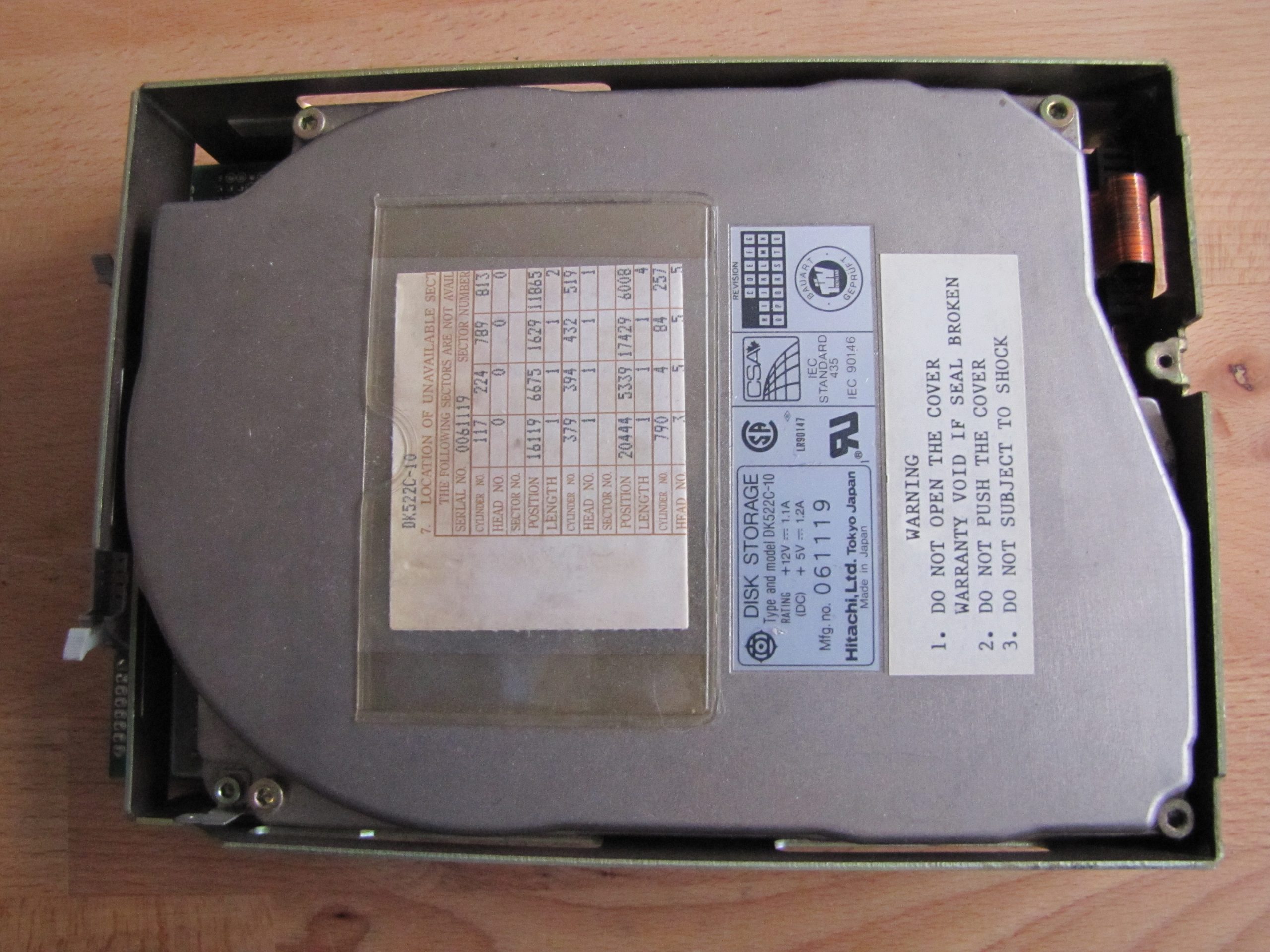
The top-side view begins to show the size of this monster, which becomes even more apparent below.
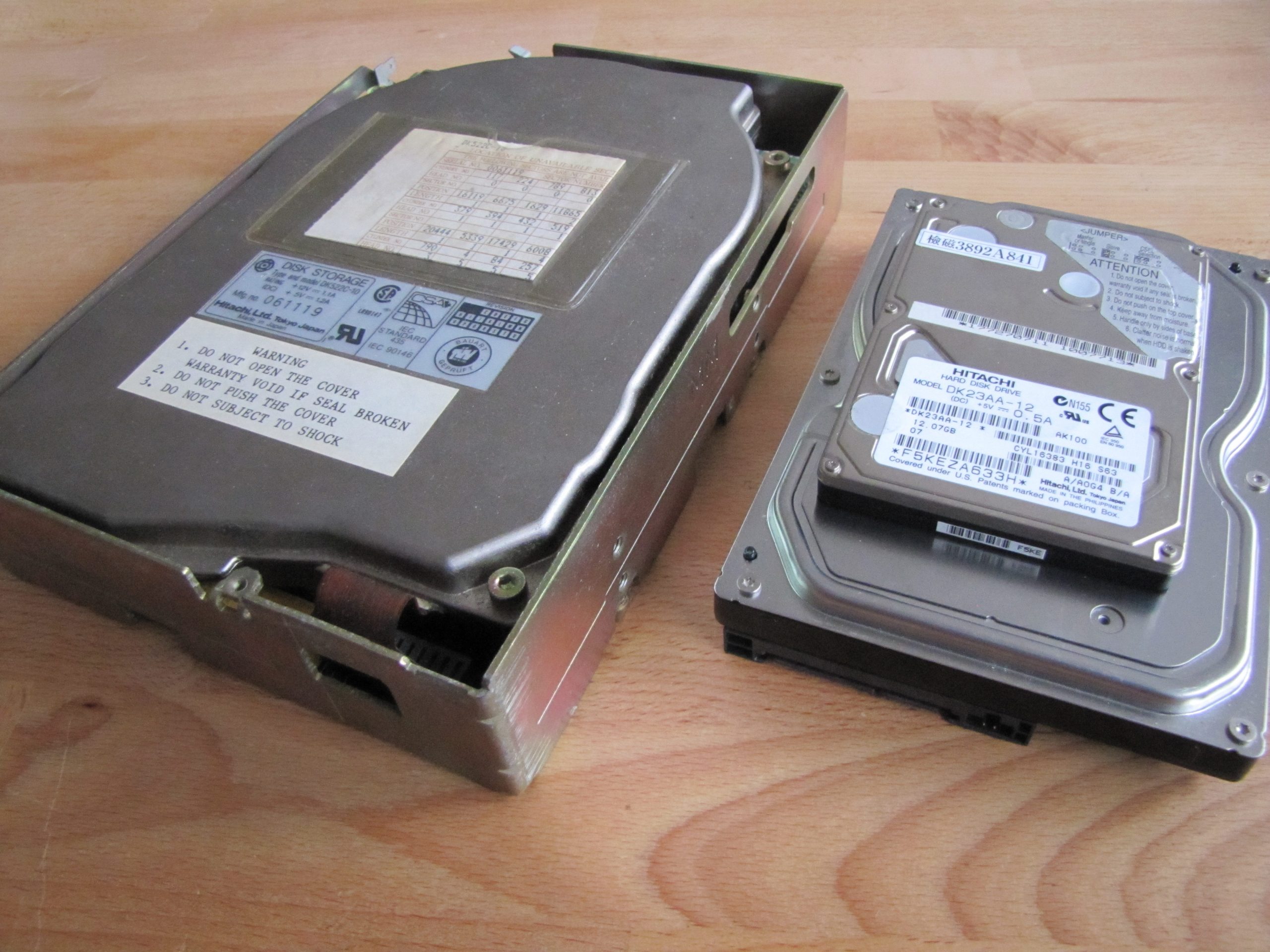
Compared to a standard 3.5″ drive, this half-height 5.25″ drive dwarfs anything it comes across. The lowly 2.5″ Hitachi DK23AA-12 (Hitachi kept the “DK” prefix until they scrapped the majority of their original designs in favour of IBM’s) shows how miraculous drive technology has become.
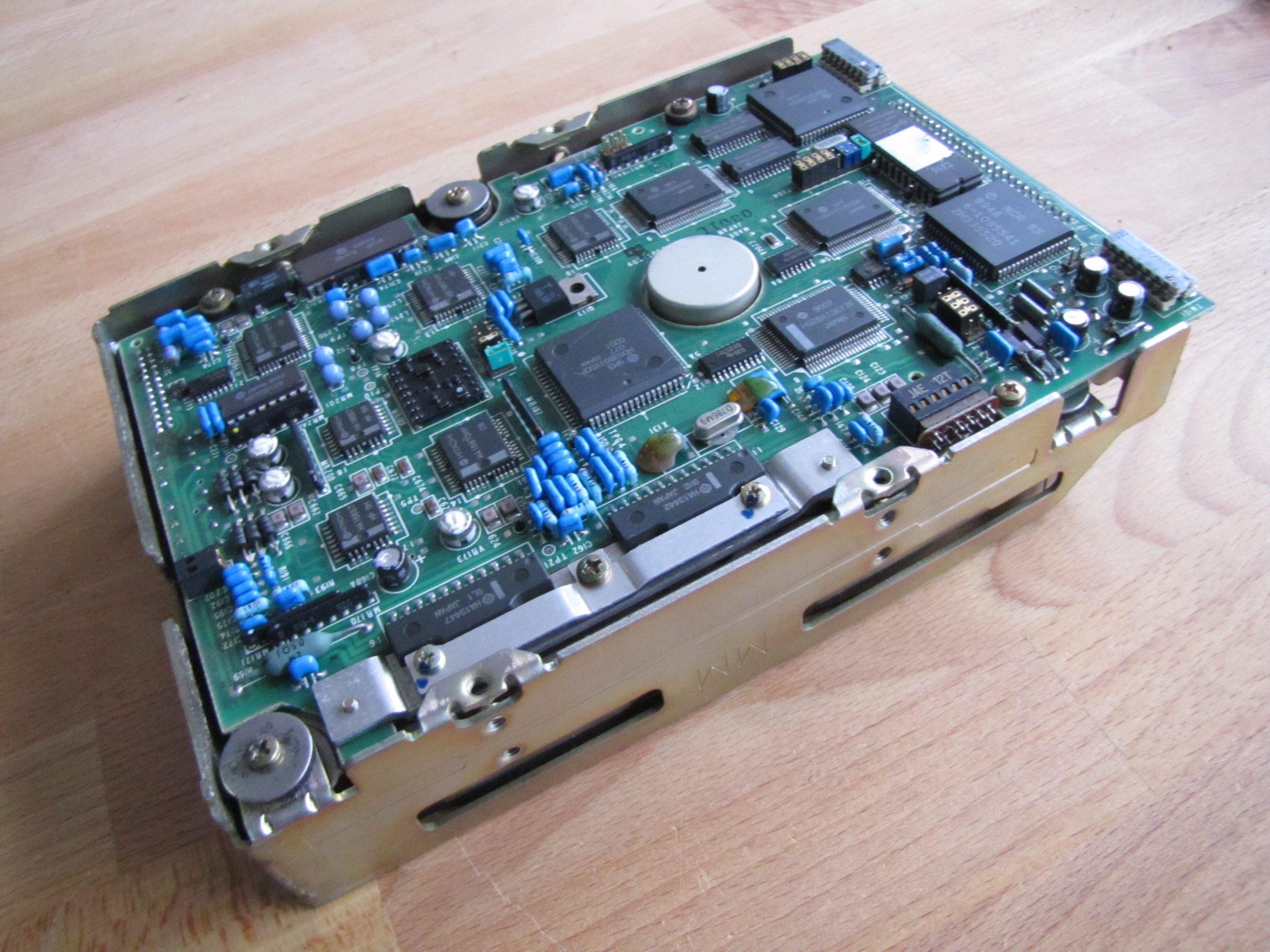
These have quite the complicated logic design, as one would except from such an early SCSI drive.
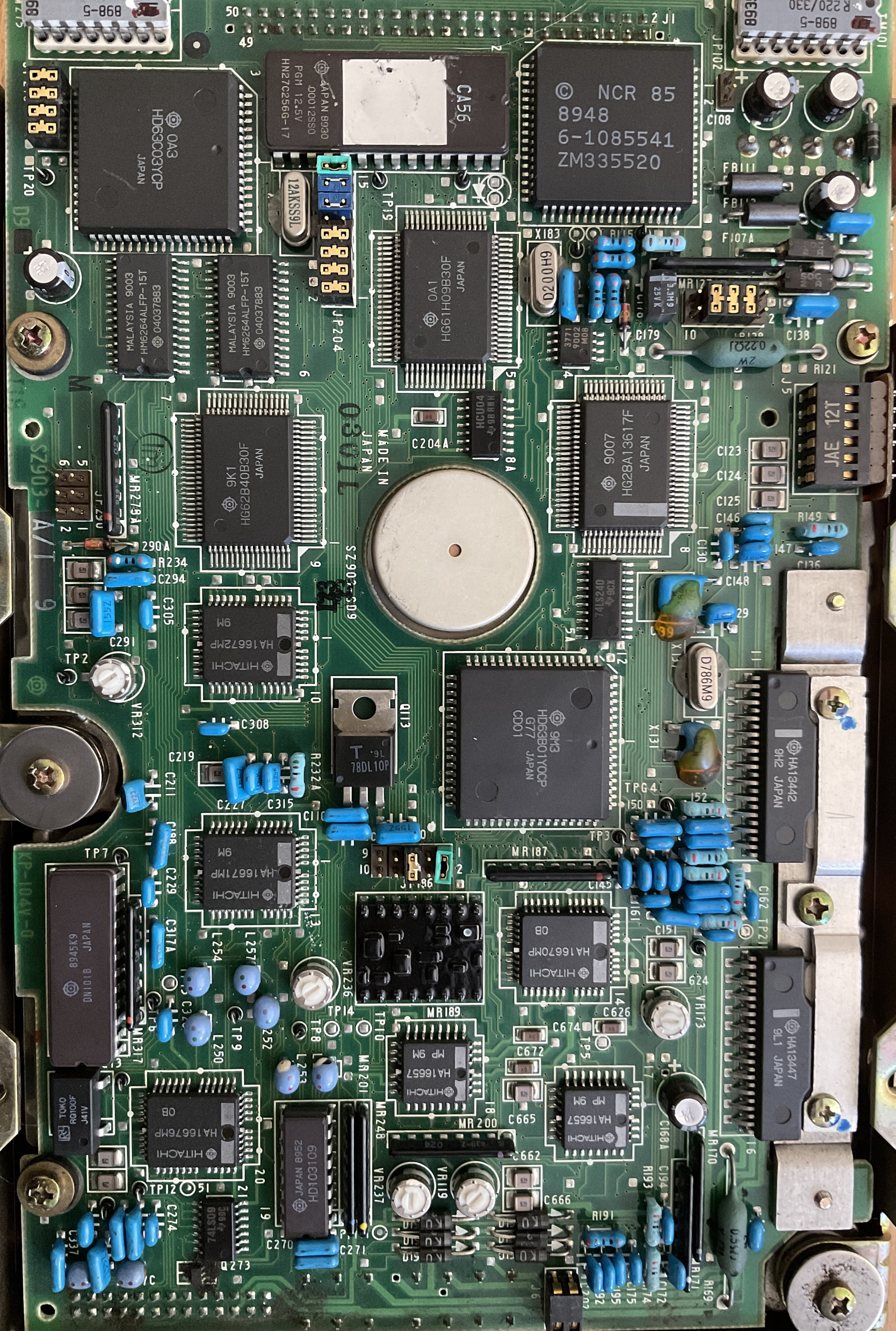
The PCB as a whole is busy & slightly overwhelming, so it’s split into three parts below for easy viewing.
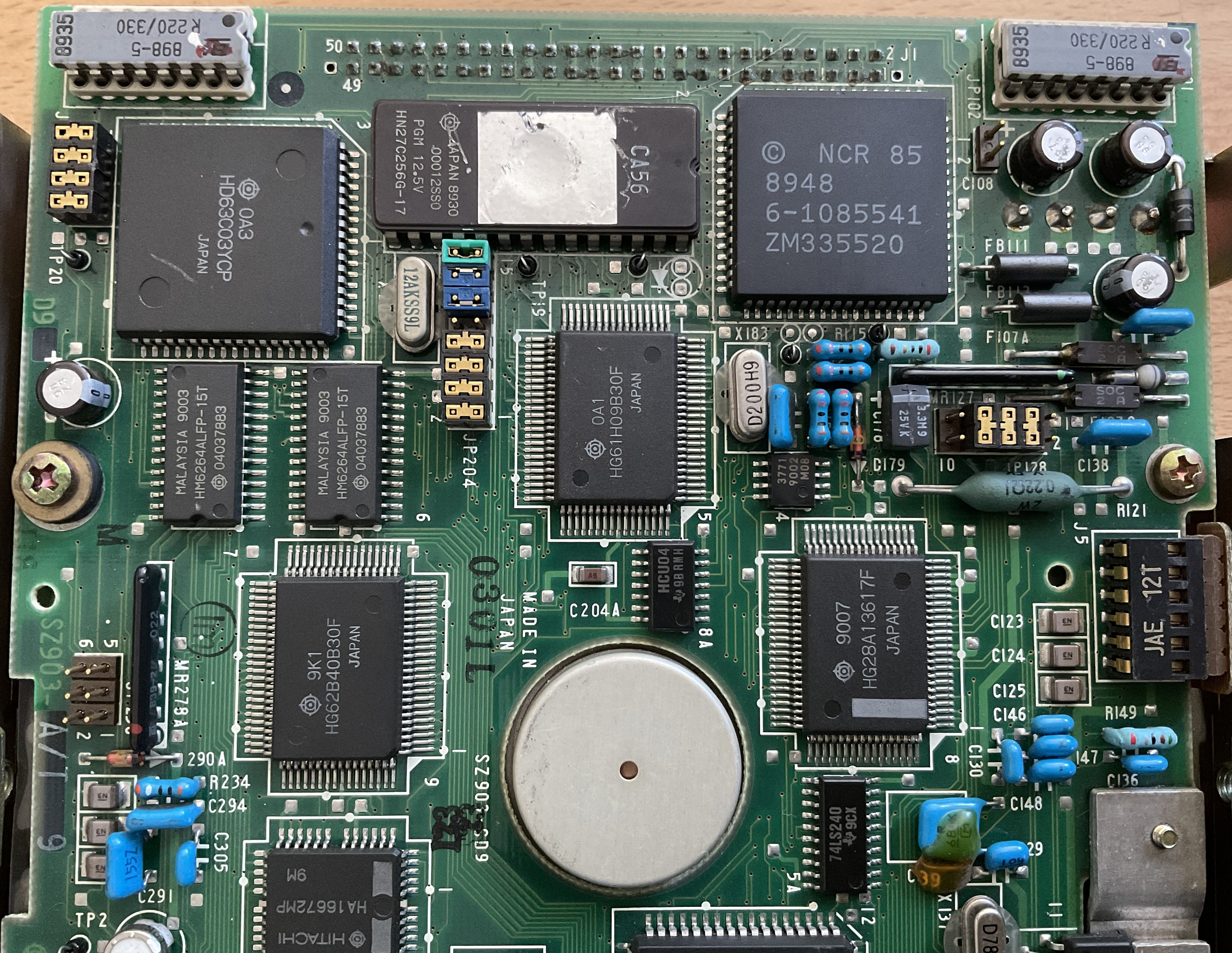
A vast array of IC’s on this PCB are manufacturered internally, by Hitachi themselves. There’s a flashed EEPROM, also manufactured by Hitachi, which might be worth reading at some point in the future. Cache is supplied by Hitachi, as expected, being a major memory vendor at the time.

The motor driver regulators are provided by Hitachi again, being HA13442’s, two in total. Most of these chips are custom in nature, but their positioning gives away a lot of their function. Unfortunately, the random jumper blocks across the board lack any documentation.
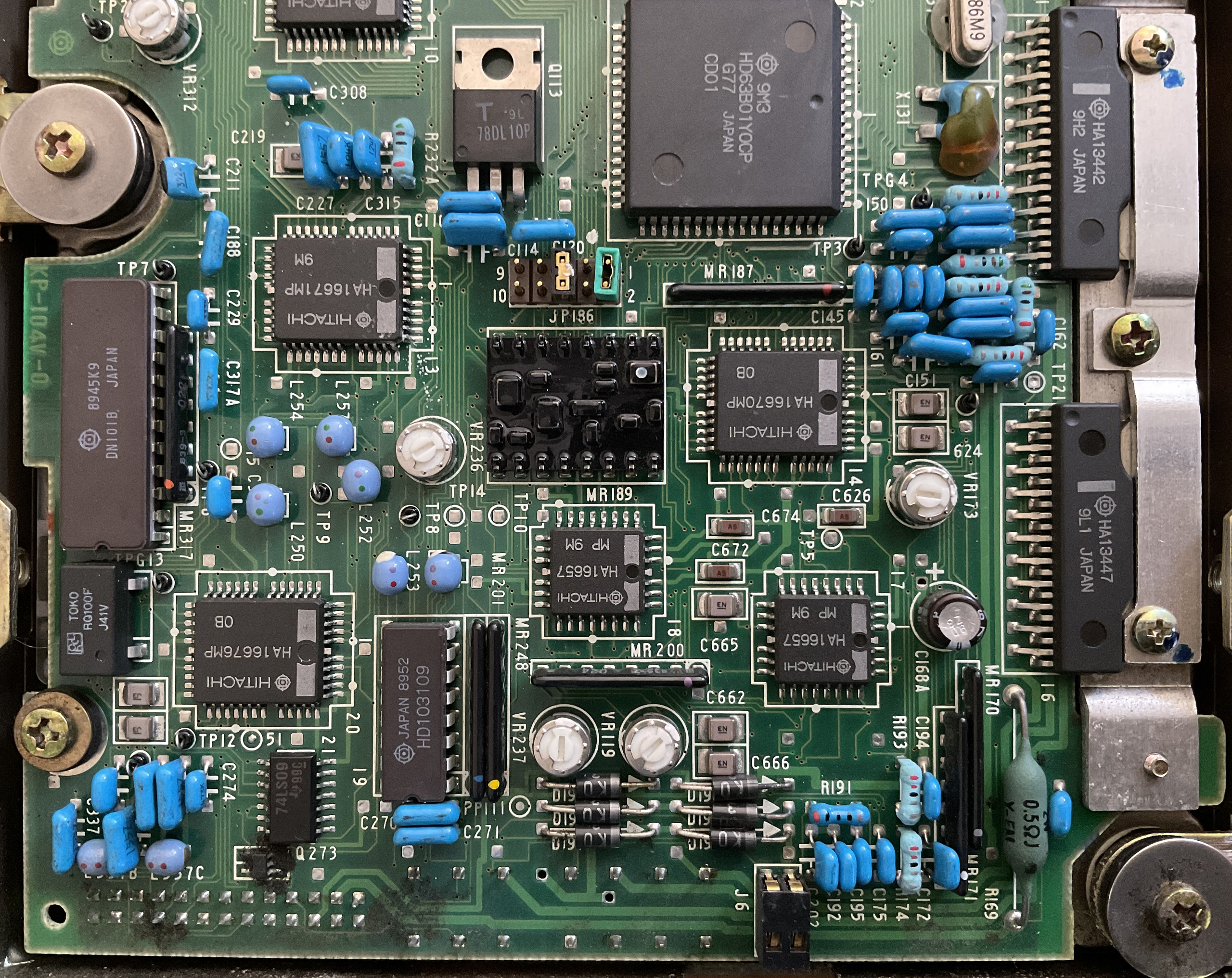
Finally, the bottom half of the board shows J6 as the external LED header, where an LED could easily be inserted, for use in an IBM XT class machine for example.
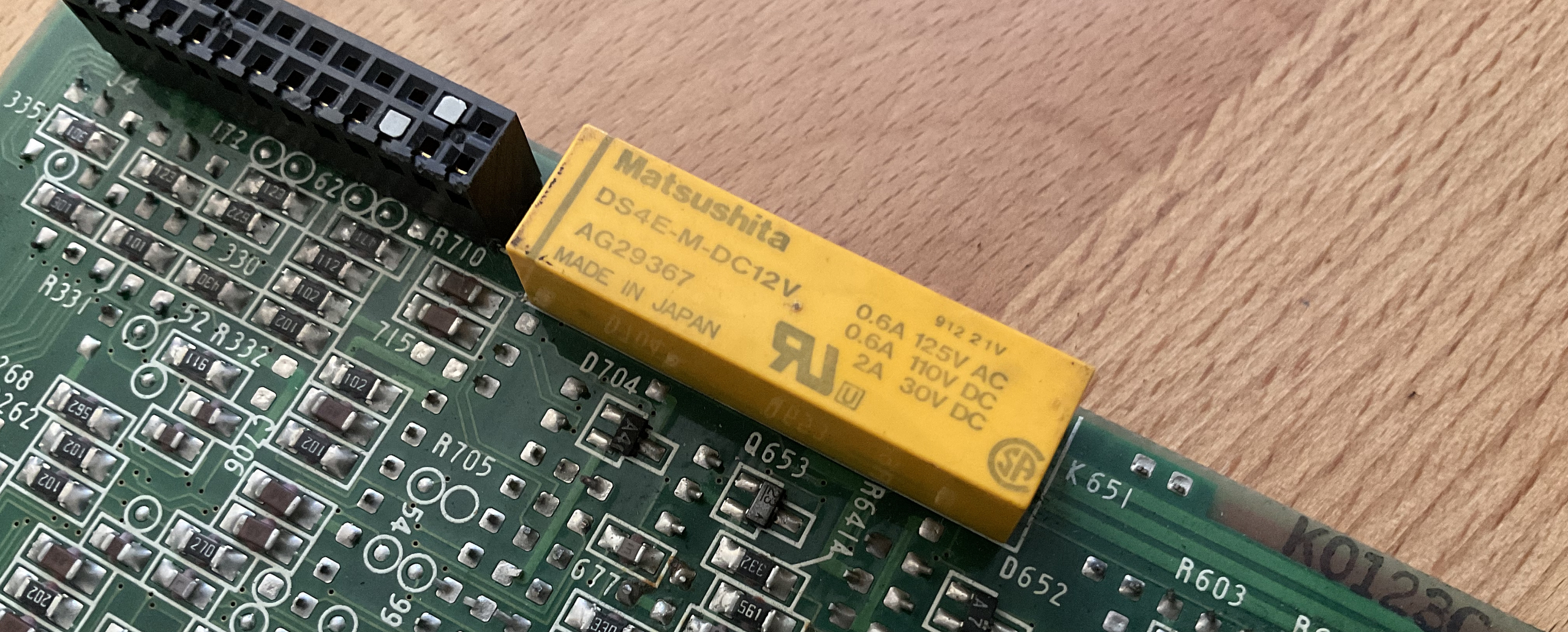
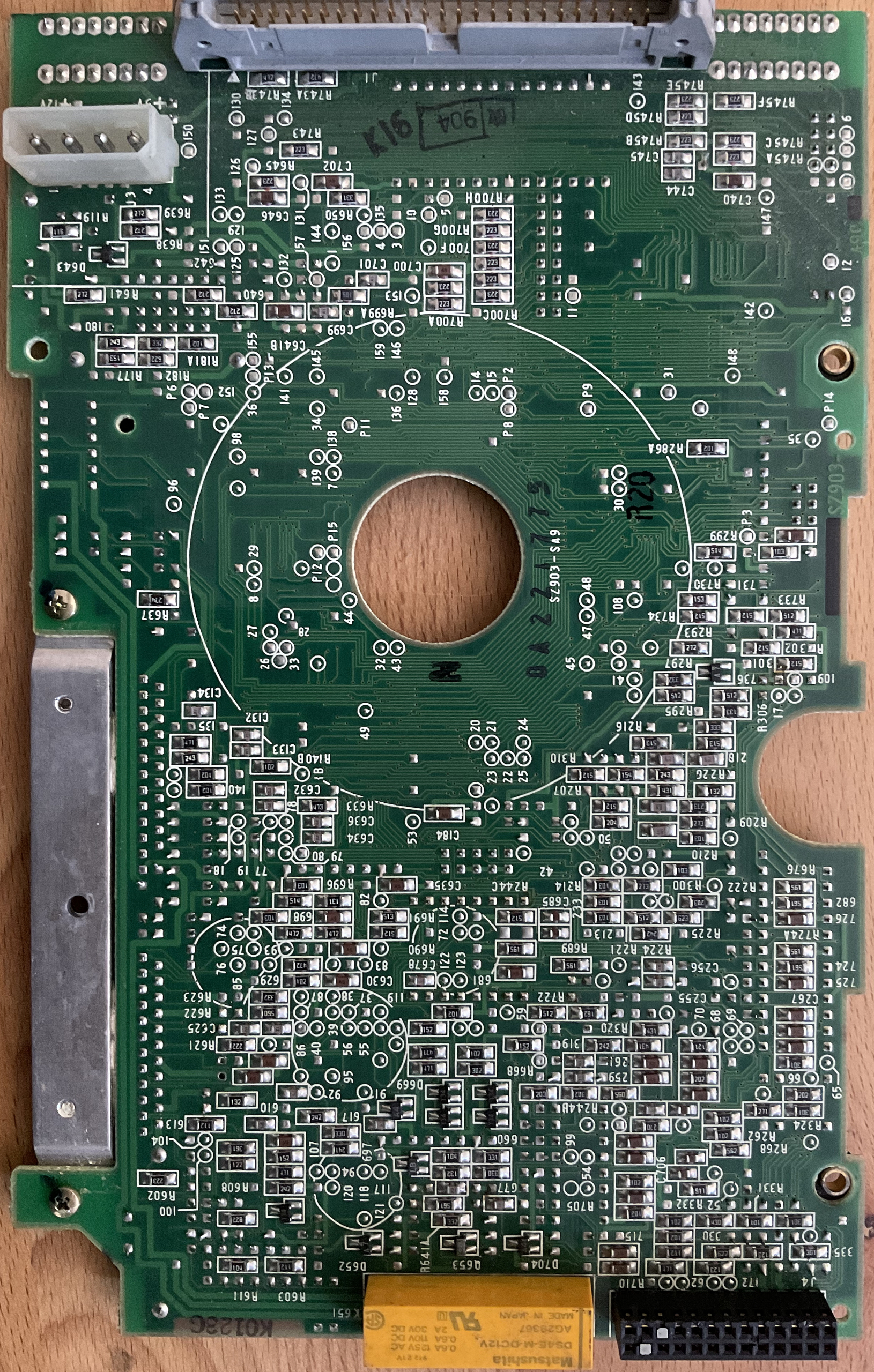
The only thing of interest on this side of the board is a single relay from Matsushita.
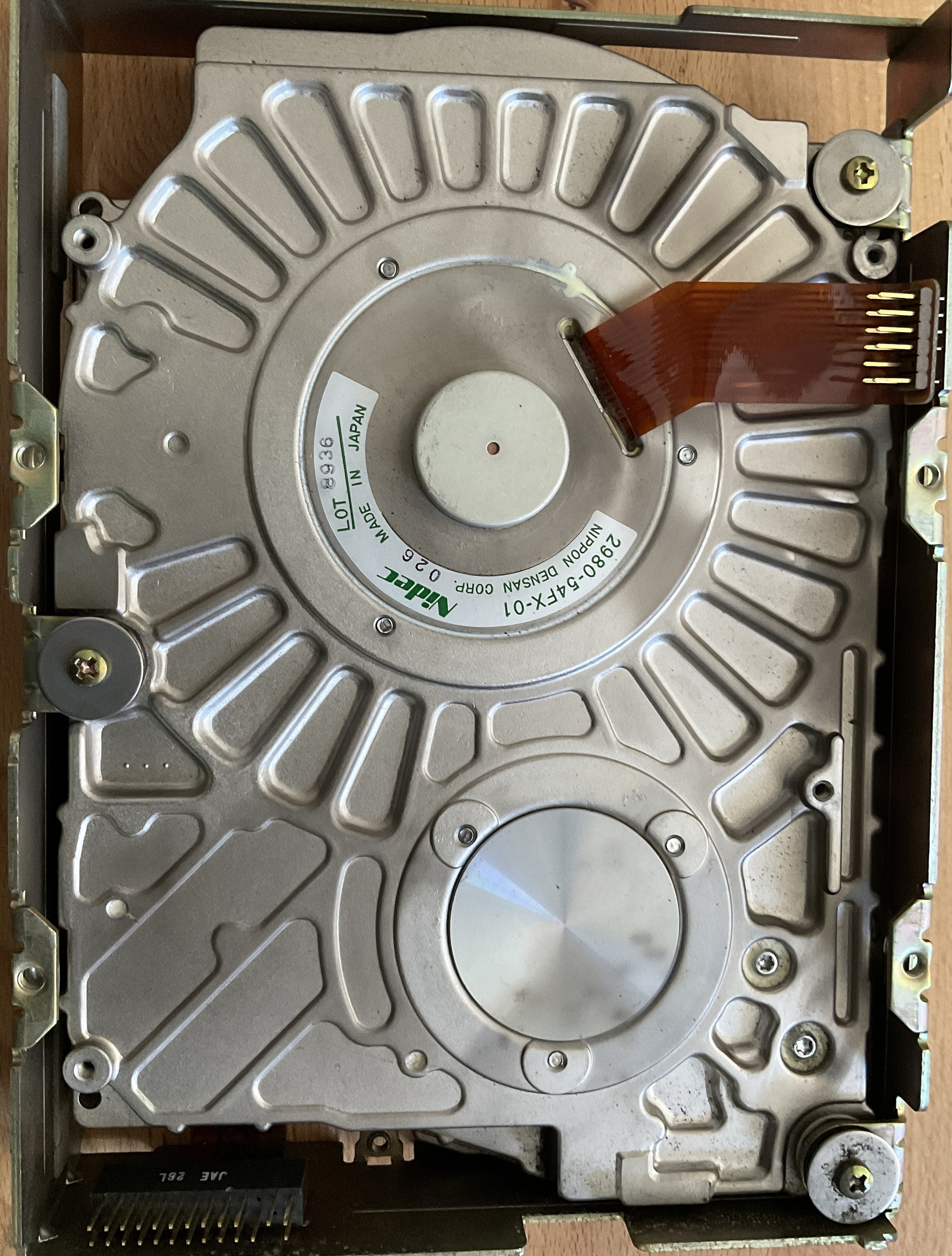
The cast base is quite pretty, with no seperating material being present.
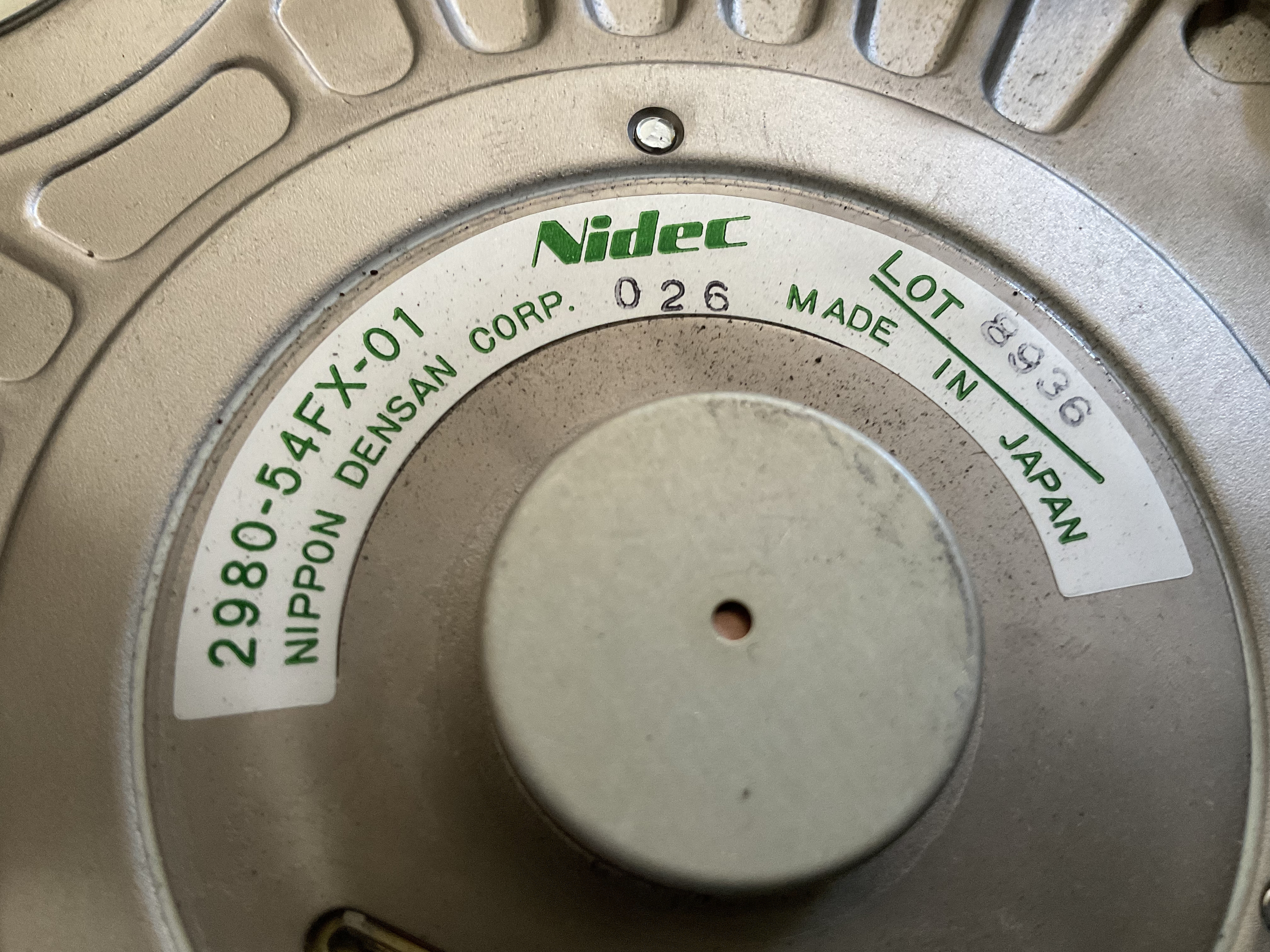
The spindle motor is a trusty old Nidec, being from mid-1989.
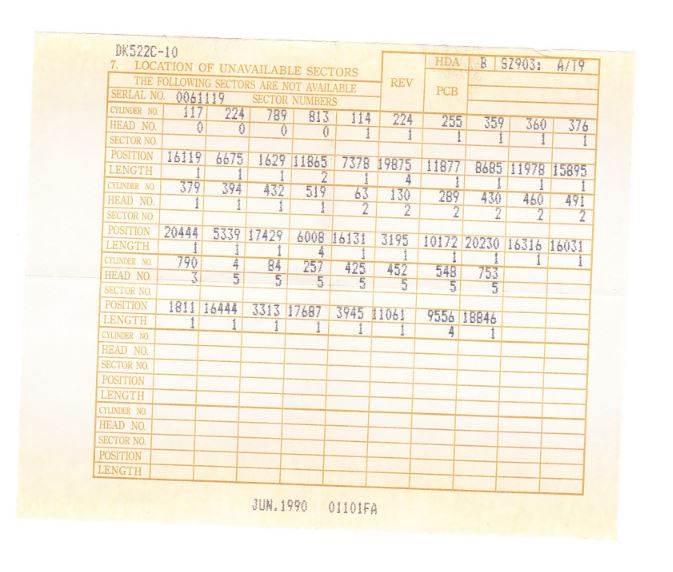
Fortunately, these drives give away their manufacture date on the enclosed defects list, this one being made in June 1990.
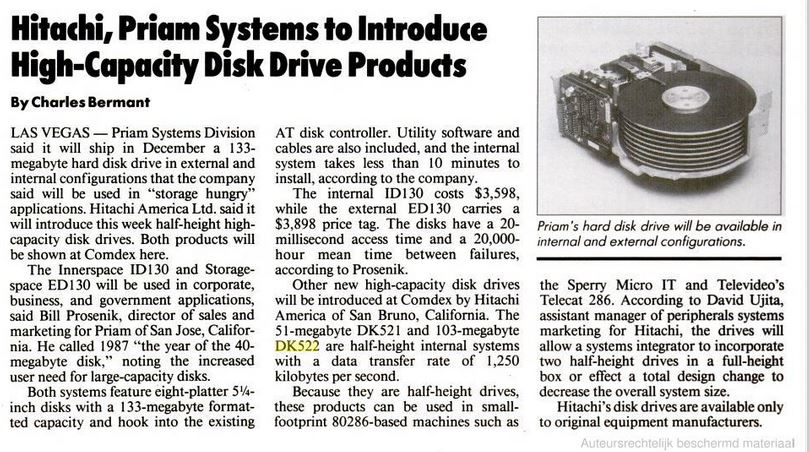


Unfortunately, this particular unit can’t be used reliably, as it seems to be having some issues with its servo data/head. As a result, looking inside isn’t very destructive.
Internal Pictures
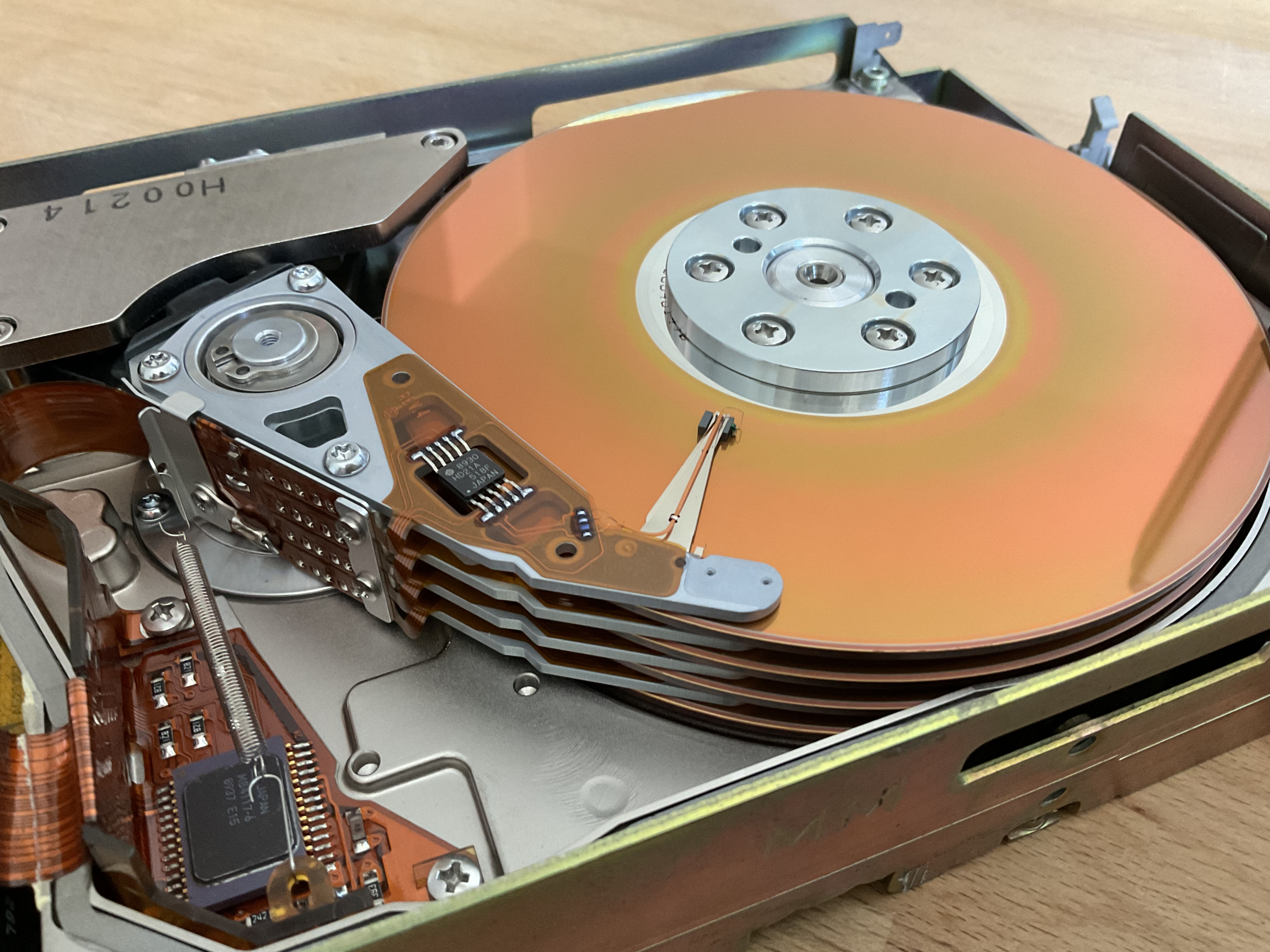
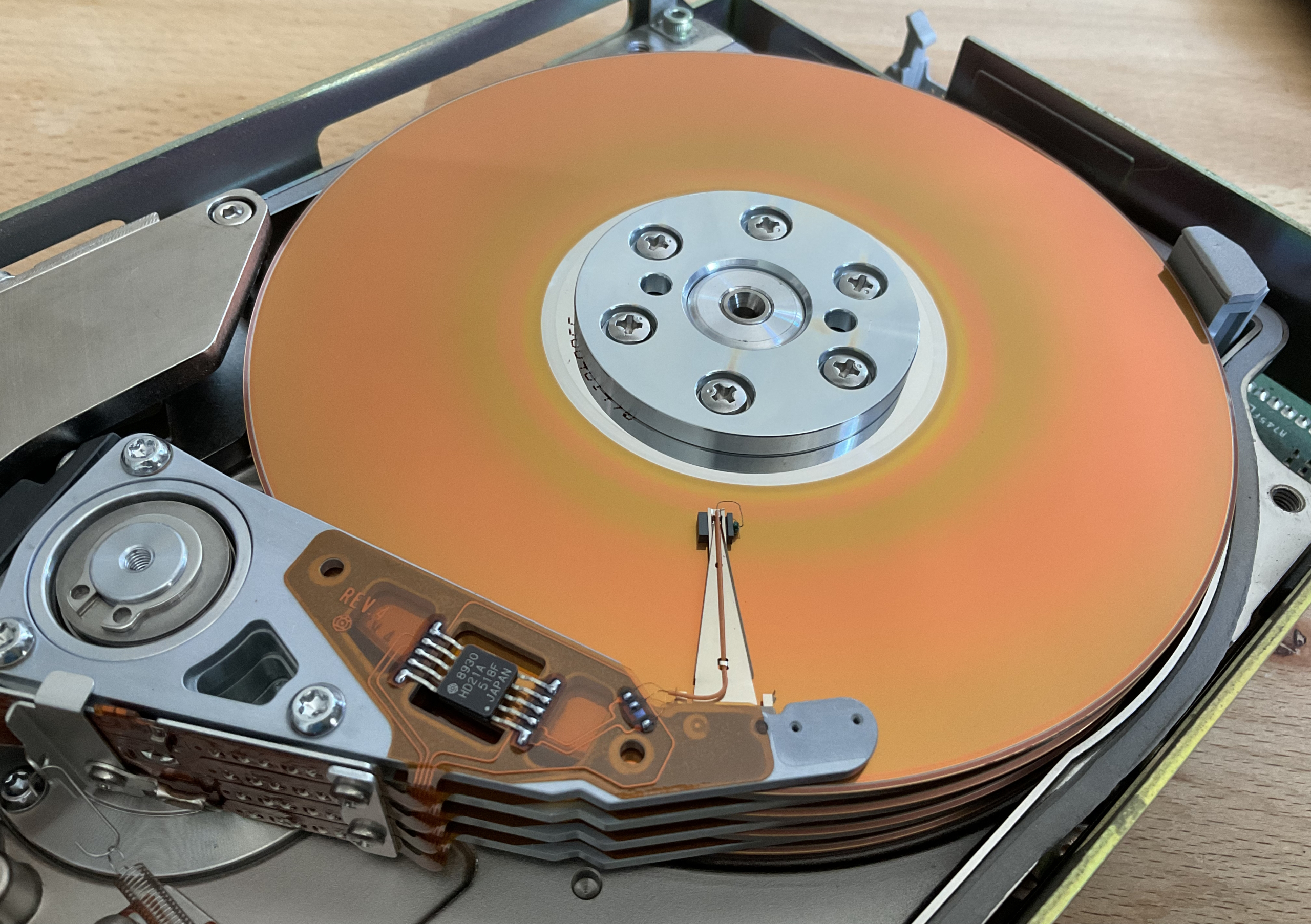

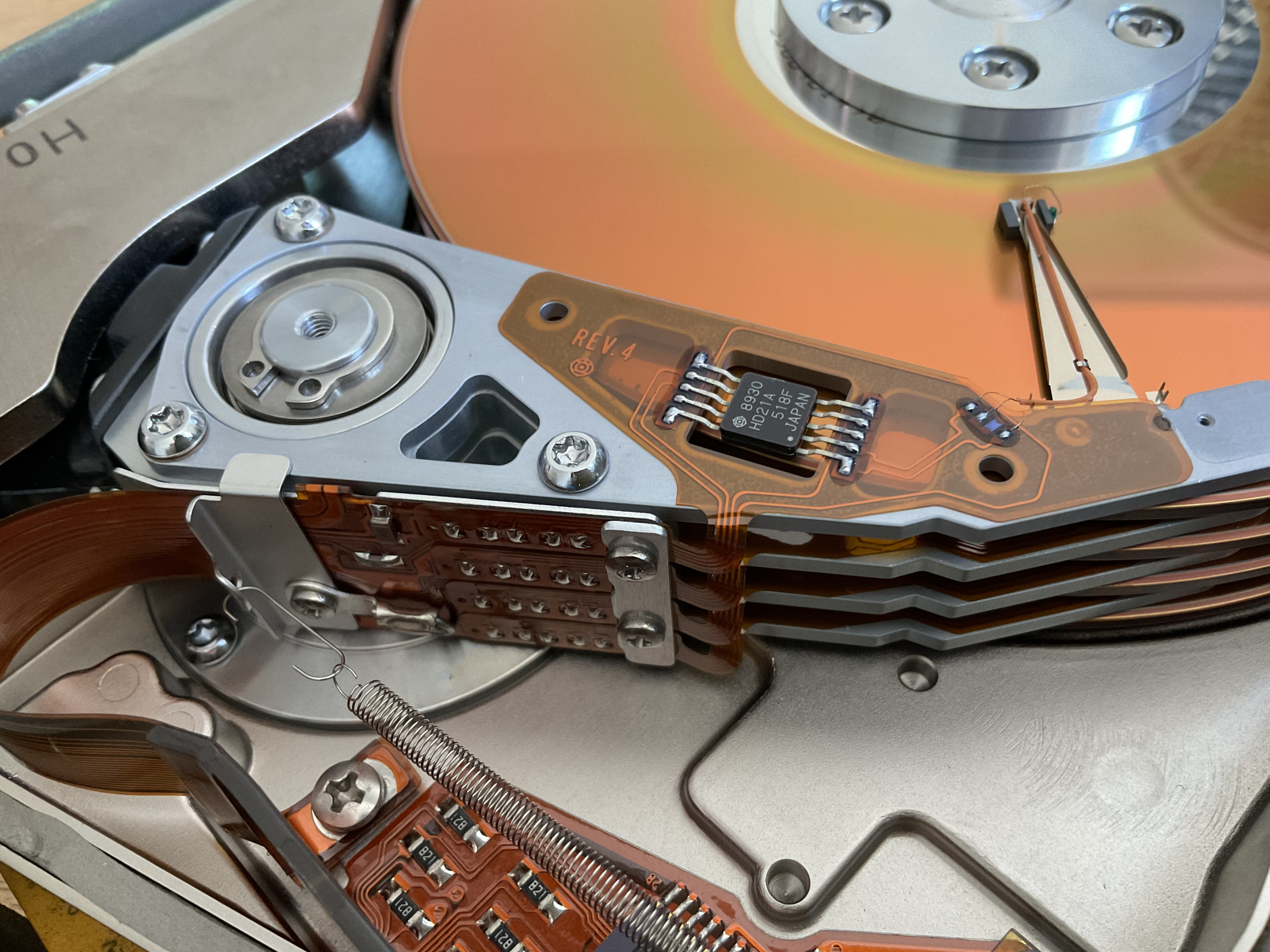
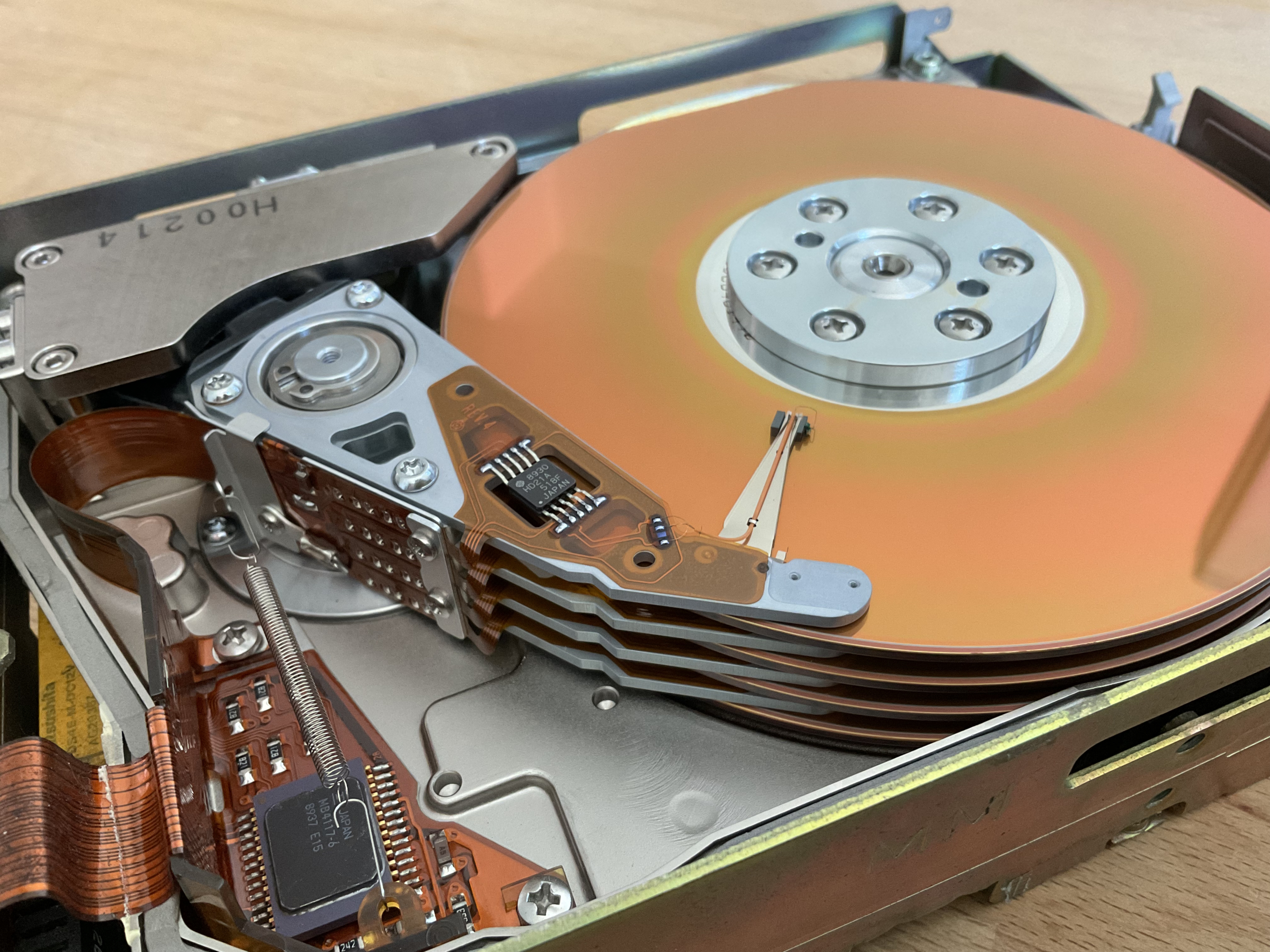

If you missed the video I made on this drive, you can find it here:
References:
[1][2] Computerworld (1986) 17th November 1986, 144 pages, Vol. 20, No. 46, ISSN 0010-4841, Published by IDG Enterprise, Acquired from: https://books.google.nl/books?id=a5AitLq0kikC